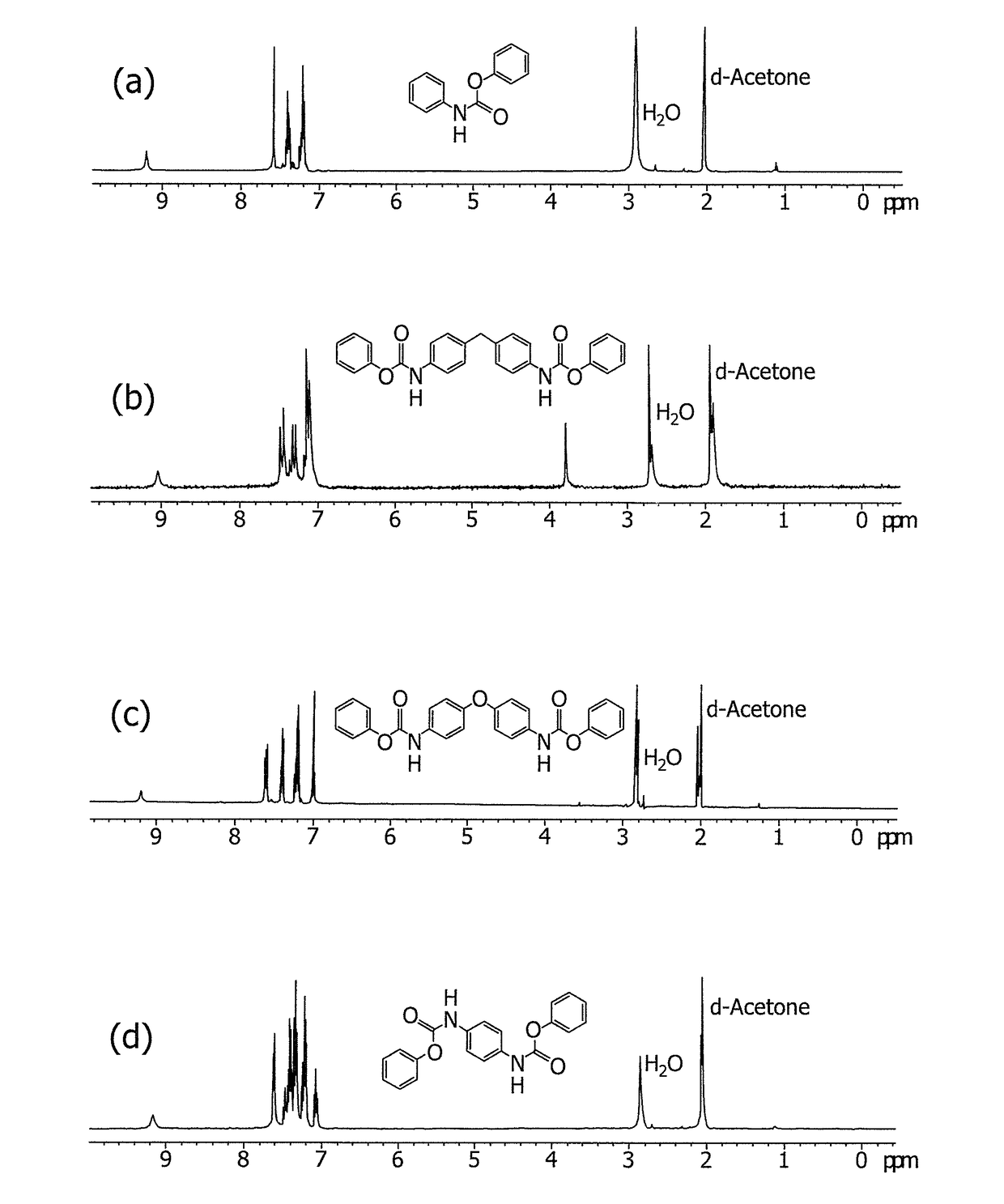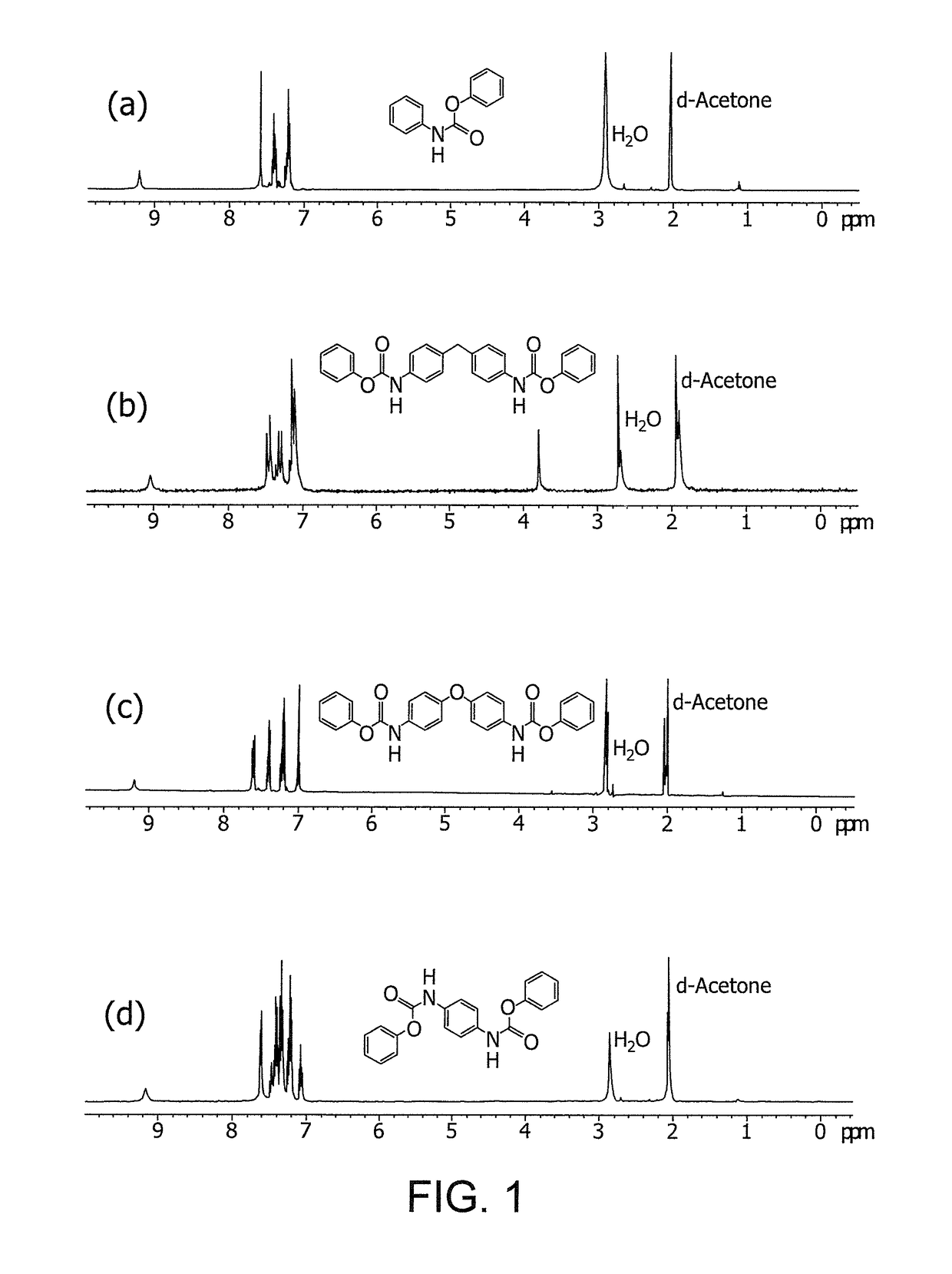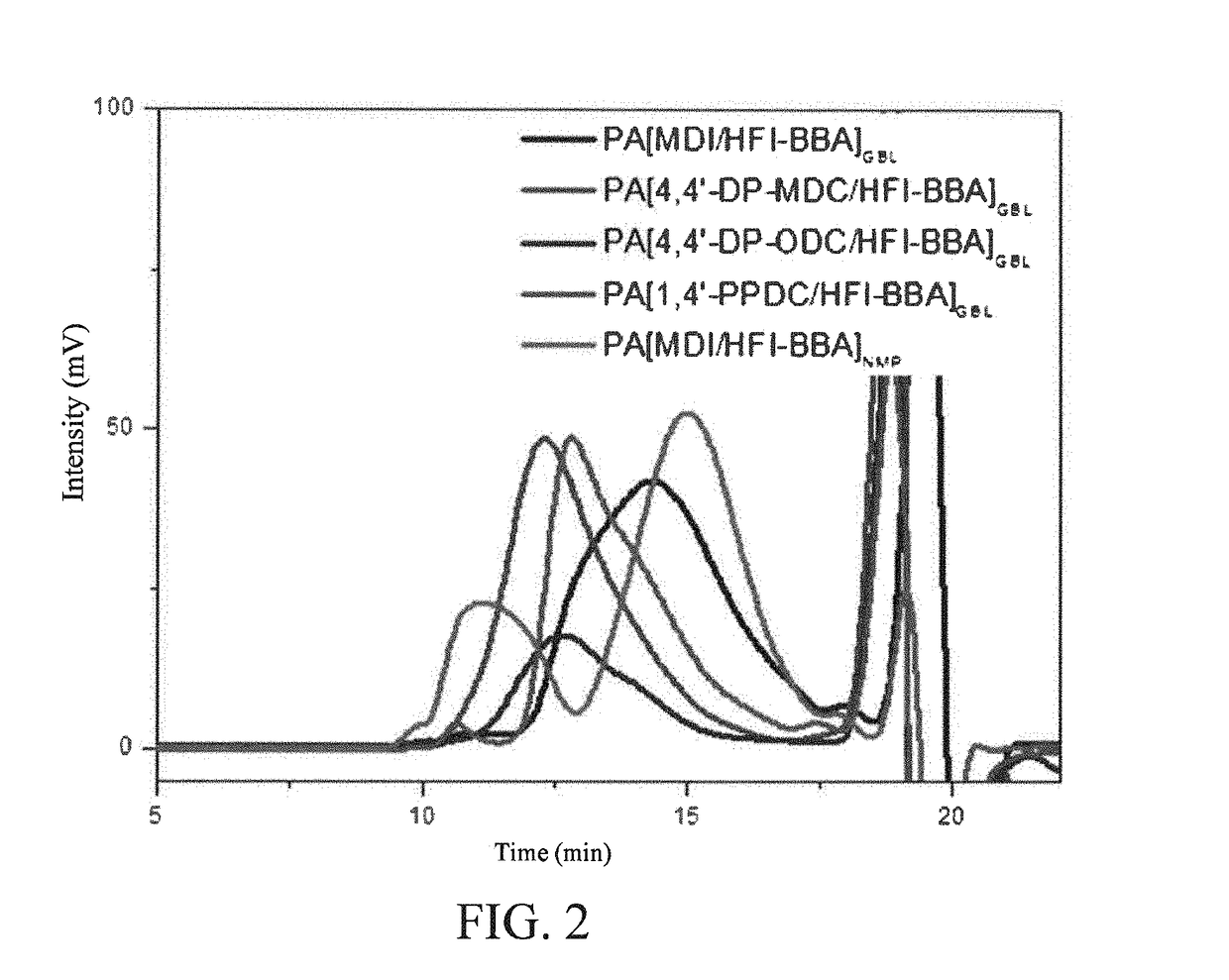Method for producing amides or polyamides by using aromatic carbamates by way of isocyanates as precursors through catalyzed thermal processes and method for producing aromatic carbamate precursors from aromatic amines
a technology of isocyanates and amides, which is applied in the preparation of carbamate derivatives, organic chemistry, carbamate derivatives, etc., can solve the problems of high toxicity and tendency to side reactions, limited isocyanates, and difficult storage, so as to achieve effective inhibition of side reactions and high yield , the effect of high purity
- Summary
- Abstract
- Description
- Claims
- Application Information
AI Technical Summary
Benefits of technology
Problems solved by technology
Method used
Image
Examples
example 1-1
of Phenyl N-Phenylcarbamate from Aniline and Diphenyl Carbonate
[0066]1,3,5-tris(3-(dimethylamino)propyl)hexahydro-1,3,5-triazine (0.01 g) and isobutyric acid (0.08 g) were used as co-catalysts and added to a three-neck flask, and toluene (150 ml), aniline (9.3 g, 0.1 mole), and diphenyl carbonate (64.2 g, 0.3 mole) were also added. The mixed solution was mechanically stirred at 55° C. for 48 hours and then cooled to −10° C., to obtain a precipitate. The precipitate was separated by filtration, washed with toluene, and dried under vacuum to obtain 21.0 g of phenyl N-phenylcarbamate with an yield of about 98%.
[0067]The FT-IR (KBr) spectrum shows a peak of ν (C═O) at 1714 cm−1, and a peak of ν (N—H) at 3319 cm−1. The 1H NMR (400 MHz, Acetone-d6) spectrum shows that δ (Ar—H) is at 7.09 to 7.7 and δ (s, 1H, N—H) is at 9.2. The prepared phenyl N-phenylcarbamate has a melting point ranging from 134.1 to 135.3° C., as determined by differential scanning calorimetry (DSC; lit 135° C.). The a...
example 1-2
of 4,4′-methylene-diphenylene bis-phenylcarbamate from 4,4′-methylenedianiline and diphenyl carbonate
[0068]1,3,5-tris(3-(dimethylamino)propyl)hexahydro-1,3,5-triazine (0.01 g) and isobutyric acid (0.08 g) were used as co-catalysts and added to a 500 ml three-neck flask, and toluene (150 ml), 4,4′-methylenedianiline (19.8 g, 0.1 mole) and diphenyl carbonate (128.5 g, 0.6 mole) were also added. The mixed solution was mechanically stirred at 55° C. for 48 hours under a non-nitrogen atmosphere, and then cooled to room temperature, to obtain a precipitate. The precipitate was separated by filtration, and dried to obtain 42.3 g of 4,4′-methylene-diphenylene bis-phenylcarbamate with a yield of about 96.4%).
[0069]The FT-IR (KBr) spectrum shows a peak of ν (C═O) at 1723 cm, and a peak of ν (N—H) at 3335 cm−1. The 1H NMR (400 MHz, Acetone-d6) spectrum shows that δ(Ar—H) is at 6.9 to 7.7, and δ (s, 1H, N—H) is at 9.2. The prepared 4,4′-methylene-diphenylene bis-phenylcarbamate has a melting po...
example 1-3
of 4,4′-oxy diphenylene bis-phenylcarbamate from 4,4′-oxydianiline and diphenyl carbonate
[0070]1,3,5-tris(3-(dimethylamino)propyl)hexahydro-1,3,5-triazine (0.01 g) and isobutyric acid (0.08 g) were used as co-catalysts and added to a 500 ml three-neck flask, and toluene (150 ml), 4,4′-oxydianiline (20 g, 0.1 mole), and diphenyl carbonate (128.5 g, 0.6 mole) were also added. The mixed solution was mechanically stirred at 55° C. for 48 hours under a non-nitrogen atmosphere, and then cooled to room temperature, to obtain a precipitate. The precipitate was separated by filtration, and dried to obtain 42.7 g of 4,4′-oxy diphenylene bis-phenylcarbamates with a yield of about 97%.
[0071]The FT-IR (KBr) spectrum shows a peak of ν (C═O) at 1722 cm−1, and a peak of ν (N—H) at 3340 cm−1. The 1H NMR (400 MHz, Acetone-d6) spectrum shows that δ (Ar—H) is at 6.9 to 7.7, and 5 (s, 1H, N—H) is at 9.2. The prepared 4,4′-oxy diphenylene bis-phenylcarbamate has a melting point ranging from 205.2 to 207....
PUM
| Property | Measurement | Unit |
|---|---|---|
| temperature | aaaaa | aaaaa |
| temperature | aaaaa | aaaaa |
| Tg | aaaaa | aaaaa |
Abstract
Description
Claims
Application Information
 Login to View More
Login to View More - R&D
- Intellectual Property
- Life Sciences
- Materials
- Tech Scout
- Unparalleled Data Quality
- Higher Quality Content
- 60% Fewer Hallucinations
Browse by: Latest US Patents, China's latest patents, Technical Efficacy Thesaurus, Application Domain, Technology Topic, Popular Technical Reports.
© 2025 PatSnap. All rights reserved.Legal|Privacy policy|Modern Slavery Act Transparency Statement|Sitemap|About US| Contact US: help@patsnap.com



